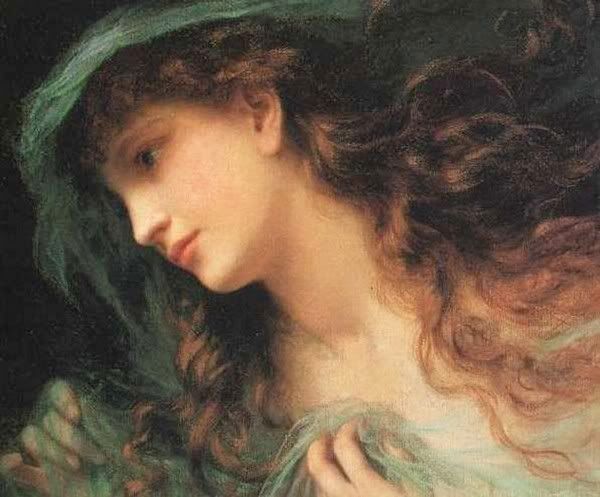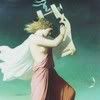
('Hylas and the nymphs', John William Waterhouse)
According to some sources, Hylas was the son of King Teiodamas of the Dryopians (a tribe of ancient Greece); others, like Ovid, state that his parents were Heracles (the greatest of Greek heroes) and the naiad (water nymph) Melite, and yet others say that his mother was the wife of Theiodamus, who had an adulterous affair with Heracles.
 ('A naiad', John William Waterhouse)
('A naiad', John William Waterhouse)
This last version explains why there was a war between Theiodamus and Heracles, which was won by the latter. Heracles taught his son how to be a warrior and took him on the Argo (ship built by Argus), which means that he was one of the Argonauts (the band of heroes who accompanied Jason). In the spring of Pegae, Hylas was kidnapped by a nymph some call Dryope, who fell in love with him and disappeared without a trace. Although Heracles looked for him for a long time, he could not find Hylas and had to set sail without him.
Alternatively, Hylas was Heracles's lover and left him for the nymphs; he was lured by them when he went to fetch some water for the evening meal (this is why he is sometimes represented carrying a pitcher in his hand). The truth is that nobody knows for sure what happens to those who are captured by nymphs, only that they are never seen again.
 ('The head of a nymph', Sophie Anderson)
('The head of a nymph', Sophie Anderson)
Nymphs were mostly represented with a female form, naked or dressed in white, wearing garlands of flowers (which enhanced their natural origin). These spirits were known for their beauty, although sometimes they had unnatural legs, like those of a goat, donkey or cow. They could move swiftly and invisibly, ride through the air and slip through small holes. Although not immortal, they lived ten times longer than humans, and retained their beauty until death, never becoming old or shriveled. These entities inhabited unpopulated areas and were typically associated with a particular location or landform, but they have been encountered by lone travelers who heard their music and spied on their dancing or bathing. Encounters with nymphs were dangerous, as the human was struck by an infatuation which rendered him dumb or insane.
The ancient Greek belief in nymphs survived in many parts of the country into the early years of the twentieth century, usually known as "nereids". This belief is linked to animism, which is the philosophical, religious or spiritual idea that souls or spirits exist not only in humans and animals but also in plants, rocks, natural phenomena such as thunder, geographic features such as mountains or rivers, or other entities of the natural environment.
Due to the depiction of mythological nymphs as female creatures completely outside of male control, who mate with men or women at their own volition, the term is often applied to women who are perceived as behaving in a similar way. Thus, the term "Nymphomania" was created by modern psychology to describe a desire to engage in human sexual acts at a level high enough to be considered a disorder. The person suffering from it is called a "Nymphomaniac" (or "nympho"), and can refer both to men and women.
In literature, the word "nymphet" has been used to identify a sexually precocious girl, most famously in Vladimir Nabokov's novel Lolita. The name "Lolita" has since become a more popular substitute for this term.



No hay comentarios:
Publicar un comentario